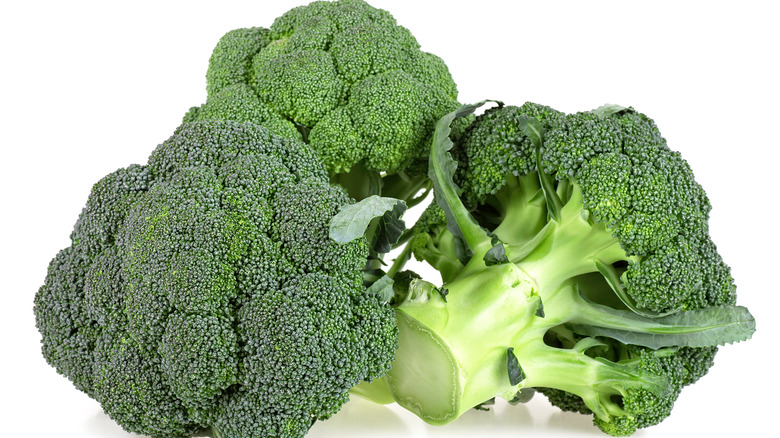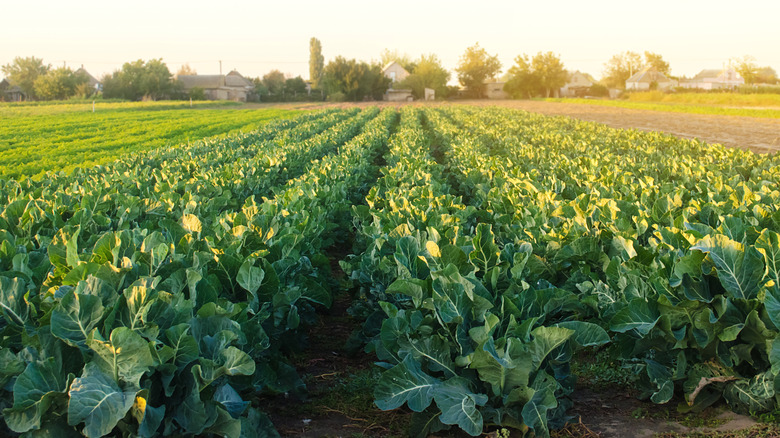The Real Reason You Should Keep Broccoli Stems
There are parts of produce we've just always known not to eat — avocado pits and banana peels, bitter bell pepper seeds, cherry stems and radish roots — to name a few. They are usually the parts that serve as some sort of protection or support to the fruit or vegetable. This is part of its growth cycle or predator prevention, illustrates the California Foundation for Agriculture in the Classroom.
Sometimes we may end up only keeping the pretty parts of the crops and tossing the not-so-cute ones. So much so, companies whose sole mission is to stop that waste cycle, like Misfits Market, have come to the rescue to give the ugly ducklings of store shelves a second chance at being chosen.
Whether it's for superficial reasons or because that's what grandma did that our bins are overflowing with fruit and vegetable scraps, there's no doubt it's wasteful either way. Some parts absolutely must go (looking at you, avocado peel), but when it comes to everyone's favorite curly-headed cruciferous king, we just may be tossing out the best part — and it's not the crown.
Save the stalks
At first glance, the stalk of a head of broccoli seems to be its support — it looks just like the trunk of a tree (which is probably how your mom got you to eat its flowers as a kid). So in the garbage they usually go. But while tree trunks are not considered a delicacy, broccoli stems may be. They just require a little extra love and care in their preparation as opposed to their floret neighbors.
Broccoli florets are actually the flowers of the plant that sit atop the stalk. They are plucked from their growing cycle just before the florets blossom into small yellow flowers. So yes, the stalk serves as the support and therefore needs to be a little bit sturdier and tougher (via Bustling Nest).
But once you remove that tougher exterior, there's a delicious, delicate tasting gentle giant at the core. All that you need is a peeler and a minute or two of patience. When the fibrous outer skin is gone, you can use what remains just as you would any other vegetable. Per Plant Care Today, you can slice them up and eat them raw, grate them into a rice form, add to your pesto — opportunities abound for the versatile green guy.

